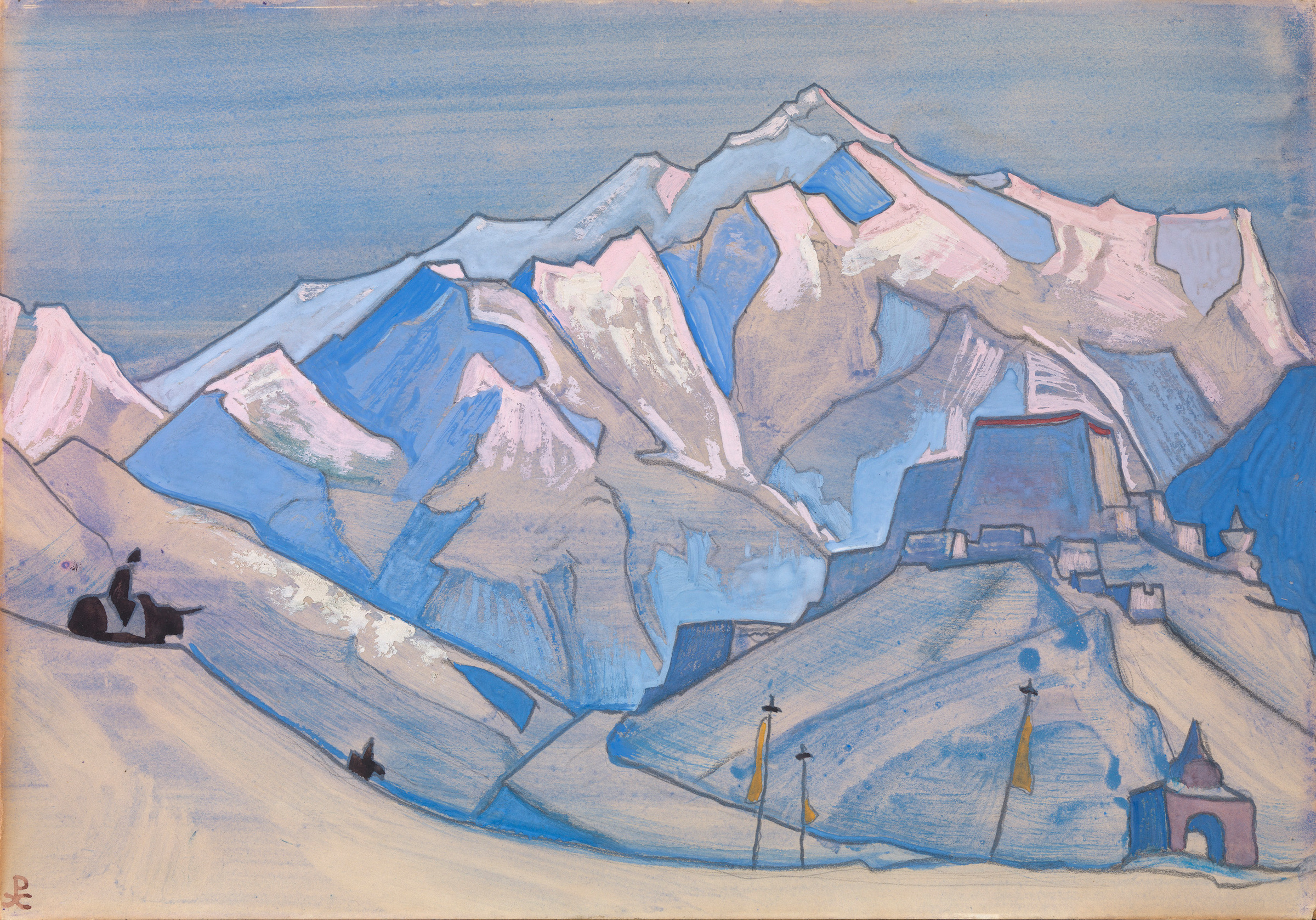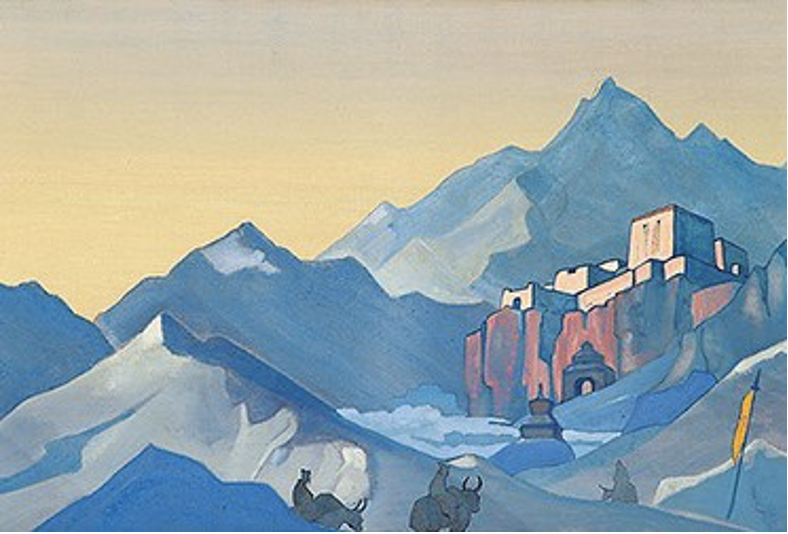ÉCOLE DE PARIS AND OTHER MASTERS
10 April 2024

12. ROERICH, NICHOLAS (1874-1947)
Holy Mountains, signed with the artist's monogram, further numbered and dated “33.1933” on the reverse.
Tempera and pencil on paper, laid on cardboard, 25.3 by 36.3 cm.
SOLD FOR 96,408 GBP
Provenance: At the Roerich’s estate in Nagar, Kullu, India.
Roerich Museum, New York, 1934-1935.
Collection of Mrs. Katherine Campbell (1898-1996), from 1935 until circa 1960 (?).
Private collection, UK.
Holy Mountains was created in 1933 during one of the most prolific periods in the artist’s oeuvre. The present lot is inscribed “33.1933” by Nicholas Roerich on the reverse: “33". which, according to the archives of the Roerich Museum in New York, corresponds to the entry in the artist’s list of paintings for 1933. The entry says: “Св. Горы. /листы альбома/“ (in Russian, where “Св.” is an abbreviation of “Святые”) and translates as “Holy Mountains /album leaves/“.
It is part of the “Holy Mountain” series, which includes 15 paintings, all of them done in 1933. Twelve are works on canvas, about 18 by 31 inches (45.5 by 79 cm), while three, including this work, are “album leaves” of the same size and on paper. Four of the paintings from this series are in the collection of the Nicholas Roerich Museum in New York, one in the Russian Museum in St. Petersburg, Russia, one in the State Museum of Oriental Art in Moscow, Russia, and one in Allahabad Museum, India.
After settling with his family in Naggar in Kullu Valley in 1929, Roerich was to spend the rest of his life in India. In this “country, the outlines of which vary with each change of light ... this eternally turbulent restless ocean of clouds and indescribably diverse varieties of mists" inspired Roerich to create some of the most exceptional works. Holy Mountains is a superb example from the artistic output of the early 1930s, distinguished by a masterfully balanced and detailed composition.
Here Roerich depicts two pilgrims riding through a snowy mountainous landscape, their destination appears to be the monastery set on a mountaintop in the distance and the mountains themselves. “Before us is the road to Kailas. There rises one of the fifteen wonders described in Tibetan books: The Mount of the Bell! Along sharp ridges, one climbs to its summit. It stands higher than the last junipers, higher than the last yellow and white mountain ranges”, wrote Roerich in Himalayas – Adobe of Light.
The majestic Mount Kailas in Tibet is considered to be one of the most sacred. “In the holy caves of Kailas is the Threshold of Miracle” wrote Roerich of this place. Referred to as Stairway to Heaven, it is the abode of Shiva for Hindus, the navel of the universe for Buddhists, abode of the goddess Sipaimen for Bon and for Jain this is the site where the first leader was enlightened. Thousands of pilgrims travel to venerate this holy place every year, covering the arduous Kailash Kora trek around the mountain and visiting five monasteries along the way.
The composition of the present lot evokes with some variations that of Stronghold of the Spirit (1932), or Path to Kailas as this work was wrongly titled in J. Decter, Ph.D. Messenger of Beauty. The Life and Visionary Art of Nicholas Roerich, Rochester, Vermont, Park Street Press, 1997, p. 159, illustrated.
According to Gvido Trepša, Director of the Nicholas Roerich Museum, New York, the painting was sent to the first Roerich Museum in New York on December 16, 1933. In 1935, it was included in a group of paintings given to Mrs. Katherine Campbell as security for her monetary loans to the Roerich Museum. It remained in Mrs. Campbell’s possession till circa 1960 when, most likely, she gave it as a present to one of her friends.
We are grateful to Gvido Trepša, Director of the Nicholas Roerich Museum, New York, for his assistance with cataloguing this work.
Inscription in the artist's hand on the verso of the present lot
Stronghold of the Spirit, 1932. Nicholas Roerich Museum, New York


Notes on symbols:
* Indicates 5% Import Duty Charge applies.
◎ Indicates the lot is located outside the UK. Successful bidders would collect their lots outside the UK after payment.
Ω Indicates 20% Import Duty Charge applies.
§ Indicates Artist's Resale Right applies.
† Indicates Standard VAT scheme applies, and the rate of 20% VAT will be charged on both hammer price and premium.